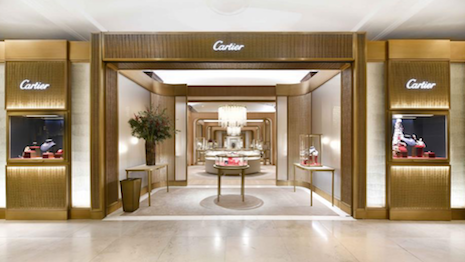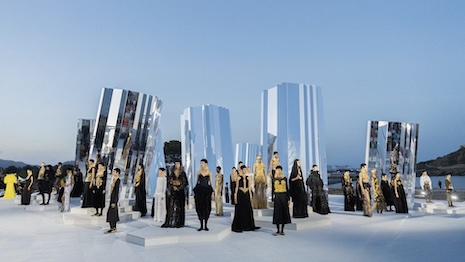Harrods is already one of the most prestigious department stores in the United Kingdom, but a new report finds that the store is also a huge draw for real estate purchases in the surrounding neighborhood of Knightsbridge.
Harrods Estates, the luxury real estate arm of Harrods, released a report revealing that the majority of buyers who moved into the neighborhood of Knightsbridge near Harrods’ location in Central London specifically asked to be closer to the store. The report shows that Harrods’ physical presence is still a massive draw and can drive not only business but also people's choices of where to live.
Harrods effect
Harrods is a premier destination for those visiting Central London.
The department store has a commanding presence, with more than 1,000 square feet of retail space stocking some of the most sought-after brands.
Now, Harrods has revealed that its physical presence has even had an effect on the local real estate market.
According to Harrods Estates, proximity to Harrods was specifically asked for by a majority of residents moving to the area around the store.

Harrods' Cartier shop-in-shop. Image credit: Harrods
Proximity to Harrods also shows a direct correlation to a property’s price. A home five to 10 minutes away from the store averaged for about 2,228 pounds per square foot, or $3,118 at current exchange, while a home within five minutes of the store averaged 2,598 pounds per square foot, or $3,636.
Overall sales in luxury real estate throughout London have cooled over the last few months, but the area around Harrods continues to be a valuable location within the neighborhood of Knightsbridge thanks in part to Harrods’ commitment to the local culture.
Local real estate
The United Kingdom’s European Union referendum vote caused the pound to decline in value and, as a result, affluent Chinese are finding the country an attractive travel destination, according to a report by Hurun.
In its “UK Luxury Brands in China” report, a focused summary based on the “Best of the Best Awards 2017” survey and the “Chinese Luxury Consumer 2017” study, Hurun explored the impact British brands are having on China’s luxury consumer. British brands and culture, in many ways, represent the old guard of luxury due to dedication to heritage, quality and craftsmanship, concepts that align with Chinese sentiment, making retailers such as Harrods highly popular with Chinese travelers, who are also valuable customers for the U.K.’s luxury real estate market (see story).
Part of Harrods’ appeal is its continued effort to create exciting collaborations with others in the luxury world. For example, Harrods worked with streetwear label Vetements to draw attention to the issue of overproduction.

Harrods' Vetements pop-up. Image credit: Harrods
The Zurich-based brand has taken over four of Harrods’ windows for an installation that showcases how much fashion is wasted. While potentially a counter-intuitive message for a brand and retailer, the project aims to inspire a more sustainable fashion strategy (see story).
Similarly, Cartier has doubled the size of its selling space within London department store Harrods following an extensive redesign.
Cartier’s redeveloped Harrods boutique is located in the retailer’s Fine Jewelry room, an entirely new concept. Cartier’s shop-in-shop took over one of the two existing Fine Jewelry rooms at Harrods, with the department itself expanding into a third salon, formerly known as the Luxury Jewelry room (see story).
These kinds of projects continue to make Harrods an appealing destination for many luxury consumers looking to move to Central London.
";
}
$token = ld16_get_token($post->ID);
$encrypted = ld16_encrypt($encrypted, $token);
print $encrypted;
?>


 Research, insights and analysis for CMOs, brands and retailers
Research, insights and analysis for CMOs, brands and retailers

















